Fujitsu reckons finance is ahead of the industry pack when it comes to digital transformation and three use cases back up the point.
It’s the finance sector that is the most engaged industry when it comes to digital transformation with nearly 9 out of 10 businesses (89%) reporting major initiatives underway.
That’s one of the keynote findings of the cross-sector Global Digital Transformation Survey Report 2018 from Fujitsu, which polled the attitudes and experiences of 1,535 CXOs across various industries in 16 countries worldwide.
The next closest industry sector is manufacturing (69%) while fewer than two-thirds of firms in the retail sector (62%) have the same level of commitment to transformation. That last percentage may indicate a degree of ongoing ‘Amazon panic’ among retailers as firms try to decide the best course of action.
The Fujitsu report suggests of finance’s enthusiasm that:
“This likely reflects the fact that technologies such as analytics and AI are seen as providing a significant competitive advantage in the sector, and organizations appreciate that staying at the forefront of technological change is critical for success.”
The primary driver for digital transformation programs in finance is efficiency gains/cost reduction (31%), ahead of growing the business (30%). The need to respond to competitive threats comes last (23%), which given the emergence of a new generation of digital banks is either an interesting indicator of self-confidence or self-delusion, delete as applicable.
In contrast, the retail sector, digitally devastated by Amazon and online-only retailers, is acutely aware of the dangers posed by new competitive threats and sees growing the business as its primary driver for digital investment (40%). While efficiency gains/cost reductions do register as important, retail also looks to digital to drive innovation in operating models, a reflection of the need to create the elusive omnichannel balance on the part of so-called legacy retailers most likely.
As to what’s being digitally transformed within finance organizations, it’s the core business activities that come out on top (56%). Those are followed by marketing (46%), workstyle transformation (43%), call center operations (33%) and operations/maintenance (23%).
Finance organizations also demonstrate the greatest enthusiasm for the transformation potential of Artificial Intelligence (AI), with 70% of respondents believing that the technology will deliver smart services, while 67% see it as supporting better decision-making and automating knowledge management functions. Other presumed benefits include automation of customer interfaces, office work, manufacturing processes and infrastructure maintenance.
There’s a note of cross-industry consensus when asked what the biggest challenges to digital transformation are. It’s the same story at planning, trial and implementation stages – lack of skilled staff to carry it out. And post-implementation, that’s still a huge issue, only just surpassed by cyber-security risks.
As for the million dollar question – was it worth it? – finance firms are once again heading the pack, with respondents citing 29% of projects which have already delivered positive outcomes for the business.
That’s only just ahead of retail (28%) but the priority there is around digital marketing more than core business transformation, so the metrics are less complex and probably easier to achieve on a short-term basis.
Backed up reality?
Being able to point to digital success is a de rigeur part of any financial organization’s senior management presentations today, with CXOs pointing to their various projects as proof points of modernity.
At Wells Fargo, growth in new checking customers is being driven by digital with 12% of new customers now being acquired via digital channels. That’s alongside 43% of new credit card accounts coming digitally.
CEO Timothy Sloan takes a customer-centric view of the benefits of such programs, arguing that digital investment delivers new ways to create a better customer experience:
“This includes a number of changes that help our customers manage their accounts by leveraging data and technology. In June, we launched a customer pilot of Control Tower, a digital experience aimed at providing our customers’ visibility and control of their connections to their payment accounts. Last year, we introduced automatic zero balance alerts to online banking customers, and we now send an average of more than 30 million zero balance and customer-specified balance alerts a month. We’re continuing to make changes to better serve our customers who come in our branches. [We’ve] completed the rollout of our customer relationship view tool, which helps our tellers and bankers have more value-added conversations and refer customers to specialists to meet more complex needs. These conversations are improving the customer experience, and we believe they’ll further improve customer retention and deepen relationships over time, which leads to growth. We’ve also continued to create value for our customers through our focus on innovation. In the first quarter, we launched our online mortgage application, which grew to 23% of all retail applications in June. In the second quarter, we introduced iPrint biometric log-on capabilities for our commercial customers, making it easier for them to do business.”
Wells Fargo has also created a new Head of its Innovation Group in the form of Lisa Frazier, who comes, says Sloan, with “extensive experience in digital disruption”.
At Citigroup, the push towards nationwide digital banking is underway, with CFO John Gerspach highlighting it as the next stage of the bank’s wider transformation program:
“We launched the first set of foundational features in May on our mobile app, including the ability for retail banking clients to view and analyze their full financial position across firms. The next step will be to rollout enhance deposit-taking capabilities through both online and mobile channels over the coming months, along with the broader marketing campaign. This is just the start of a wider launch across the full spectrum of deposit taking, borrowing and advisory services with the goal of building full-service relationships through these digital channels.”
In keeping with the Fujitsu findings, Gerspach points to efficiency gains as a driver, part of its push to find $2.5 billion of overall savings:
“As you would expect many of those benefits are driven by our digital transformation. First is, how we’re using digital to engage with our clients shifting consumer activity to more convenient and efficient channels. Second, is how we’re using technology to streamline our own operations, things like straight through application processing, the use of big data and branch optimization.”
CEO Mike Corbat also flags up digital as a corporate priority, again taking a customer engagement perspective:
“We’ve continued to drive our digital transformation and invest for growth while self-funding these investments through efficiency savings. We’re focused on transforming the client experience across our franchise, driving digital solutions for both our consumer and institutional clients, while lowering our costs through automation or other service improvements. These efforts are leading to lower call volumes per account and higher digital engagement by our clients. And overall, we’ve improved our operating efficiency year-over-year for seven straight quarters and we’re on track to reach the low 50s by 2020.”
It’s an ongoing journey, he adds, and one that costs, but it’s a case of thinking about the longer-term value:
“You just can’t look at the revenue side of things…a lot of the investments we’re making are in this transformation from what has historically largely been an analogue business to a digital platform. And obviously we’re in the stages of making those investments and in many cases running new and parallel processes…we’ve had very good success at reducing the calls per account and transforming those into digital interactions, which generate significant savings. That’s the upticks we think have been strong and it’s accelerating and we think that continues to accelerate and then over time we get to pull out the analogue and largely run on the back of the digital platforms that we build and that should manifest itself largely in the expense line.”
With all this activity, being able to stake a claim to a top ranking as a digital bank is increasingly a talking point. For example, Dean Athanasia, President, Consumer and Small Business and Co-Head, Consumer at Bank of America, boasts:
“We are also the number one digital bank. So, we complement everything we do on the ground with our digital bank. We’re the number one digital bank and continue to invest in that…the things we are rolling out and the innovation that’s going on is helping us to grow, whether it’s digital mortgage, digital auto, and you can see some of the investments across the board.”
Athanasia says that only 25% of happen over the counter in branch today. Meanwhile, the mobile app now counts over 500 million logins and that’s where there’s inevitably a major focus with BoA now reporting 35.5 million digital users:
“It’s one app. You can do everything, client borrowing, investing, savings, transacting, you’ve got it all right here, fully-integrated with the best information and you’ve got a digital assistant on there to help you navigate whatever you can find when you are going through different pages. You can just ask her to go find you the most relevant information and it’ll come back. I asked myself last night how much did I spend on Barneys in the last six months? It pulled from three different credit cards, pulled from my checking account, what I paid off and showed me all the transactions in one spot of what I paid at Barneys in three months, six months and a year. So, we can do those kinds of things that you wouldn’t normally get in a digital environment. So, a one app strategy is critically important for us.”
As is AI. Again mirroring the Fujitsu findings, there’s a keen AI focus as part of the digital transformation work in the form of BoA’s Erica initiative, now around 3 months old and counting more than one million users.
My take
The Fujitsu findings chime with my own experience of digital transformation across the banking sector. We’ve flagged up the headline-grabbing sums of money that legacy bank after legacy bank is ready to throw at digital. The challenge for most, however, is that while the tech front end can become a bright and shiny thing, there remains the age-old CRM problem – if your attitude towards your customers is that they’re a flaming nuisance, all the digital in the world isn’t going to help. Processes and cultures need to be transformed with just as much urgency as getting an Apple Watch app out the door. The customer-centric comments of the three banks cited above are encouraging in that respect, although the proof is in the pudding. The fine words are there, but will they be backed up over time by actions?





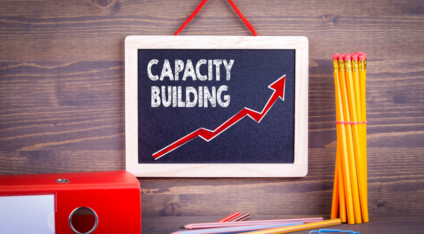

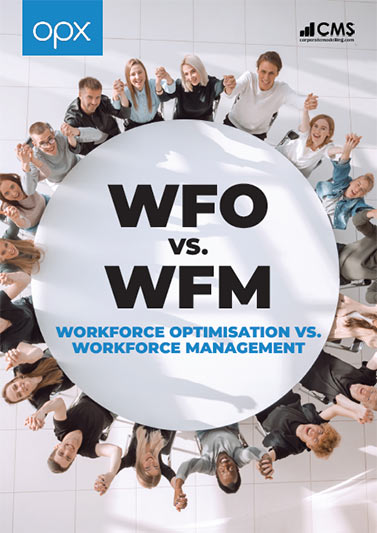 Thank you for your interest in our whitepaper. You can download Workforce Optimisation vs Workforce Management by clicking the button below.
Thank you for your interest in our whitepaper. You can download Workforce Optimisation vs Workforce Management by clicking the button below. Thank you for your interest in our case study. You can download the HCL IBS Case Study by clicking the button below.
Thank you for your interest in our case study. You can download the HCL IBS Case Study by clicking the button below. Thank you for your interest in our case study. You can download the ReAssure Case Study by clicking the button below.
Thank you for your interest in our case study. You can download the ReAssure Case Study by clicking the button below. Thank you for your interest in our case study. You can download the Student Loans Case Study by clicking the button below.
Thank you for your interest in our case study. You can download the Student Loans Case Study by clicking the button below. Thank you for your interest in our case study. You can download the Principality Building Society Case Study by clicking the button below.
Thank you for your interest in our case study. You can download the Principality Building Society Case Study by clicking the button below.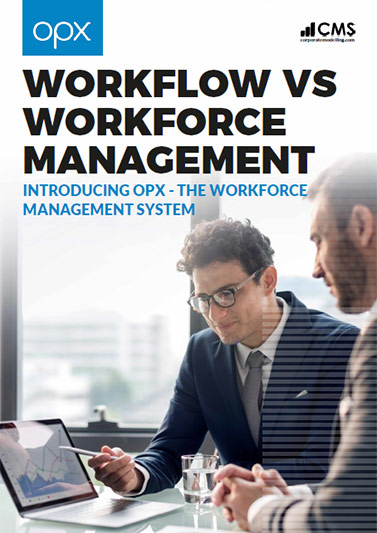 Thank you for your interest in our whitepaper. You can download WorkFlow vs WorkForce Management by clicking the button below.
Thank you for your interest in our whitepaper. You can download WorkFlow vs WorkForce Management by clicking the button below. Thank you for your interest in our whitepaper. You can download Homeworking in Financial Services Operations by clicking the button below.
Thank you for your interest in our whitepaper. You can download Homeworking in Financial Services Operations by clicking the button below. Thank you for your interest in our whitepaper. You can download Workforce Optimisation for the Back Office by clicking the button below.
Thank you for your interest in our whitepaper. You can download Workforce Optimisation for the Back Office by clicking the button below.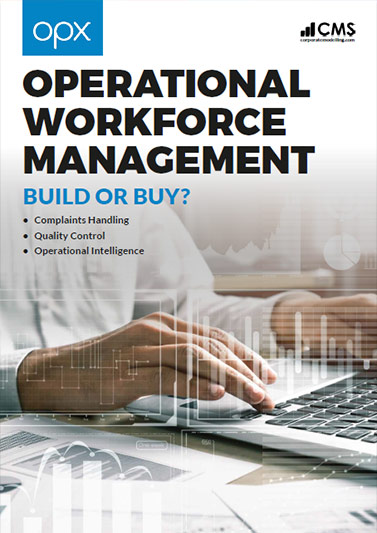 Thank you for your interest in our whitepaper. You can download Operational Workforce Management: Build or Buy? by clicking the button below.
Thank you for your interest in our whitepaper. You can download Operational Workforce Management: Build or Buy? by clicking the button below. Thank you for your interest in our whitepaper. You can download Homeworking & Back Office Workforce Optimisation by clicking the button below.
Thank you for your interest in our whitepaper. You can download Homeworking & Back Office Workforce Optimisation by clicking the button below.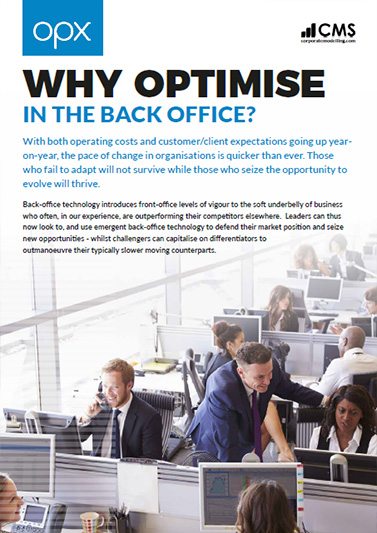 Thank you for your interest in our whitepaper. You can download Why Optimise in the Back Office? by clicking the button below.
Thank you for your interest in our whitepaper. You can download Why Optimise in the Back Office? by clicking the button below.